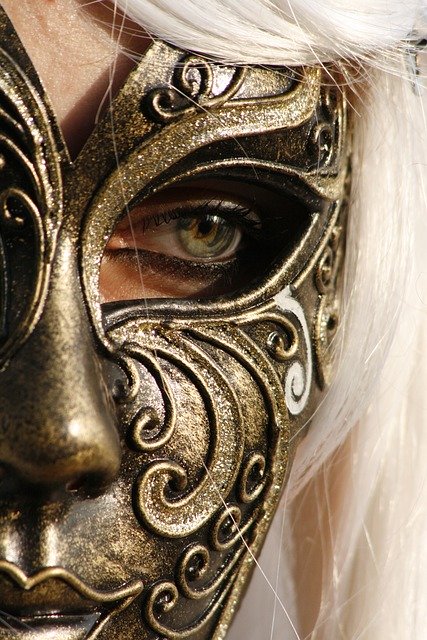Colombina in Venice, Burlamacco in Viareggio, and Farinella in Putignano are the ever-present characters of the celebrations
In Italy, Carnival celebrations became popular in the Middle Ages when, wearing masks, peasants and lords could mix without being recognized. Today, ‘Masquerading’ still characterizes the modern Carnevale, with children and adults dressing up using all their imagination. Nevertheless, traditional ‘maschere’ are still very popular and they are a symbol of Carnival. ‘Maschere‘ literally translates into ‘masks‘. However, they are representations of characters or personalities, many dating back to the Commedia dell’Arte of 16th-18th centuries, which featured familiar ‘stock’ characters. Almost every Italian town has its own typical maschera.
### One of the most famous is Colombina from Venice. She is a cunning servant often at the center of amorous and familiar intrigues.
One of the most famous is Colombina from Venice. She is a cunning servant often at the center of amorous and familiar intrigues.
She is also the protagonist of one of the most anticipated events of the famous Venetian Carnival. For the ‘flight of the Colombina’, a girl dressed up as the maschera descends with a rope from the Campanile di San Marco towards the Doge’s Palace.
In Viareggio (Lucca), home of the Tuscan carnival, the ever-present maschera is Burlamacco. It is represented as a clown dressed in a red and white checkered suit, a red hat, and a black cape. It is said that a local designer created it using different elements of the costumes of several famous maschere who had appeared to him in a dream.
The Apulian mask par excellence is Farinella, who is one of the protagonists of the Carnival of Putignano (Bari). Its name refers to the local traditional chickpea and barley flour – ‘farina’ in Italian. It is represented multicolored jester clothing, with blue collar, shorts, and shoes. His headgear has three tips that symbolize the three hills on which Putignano stands.

